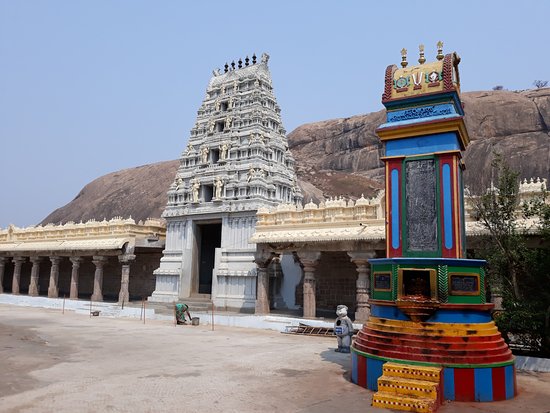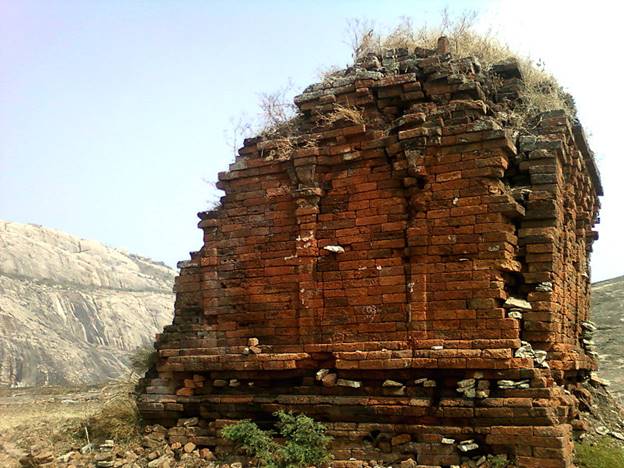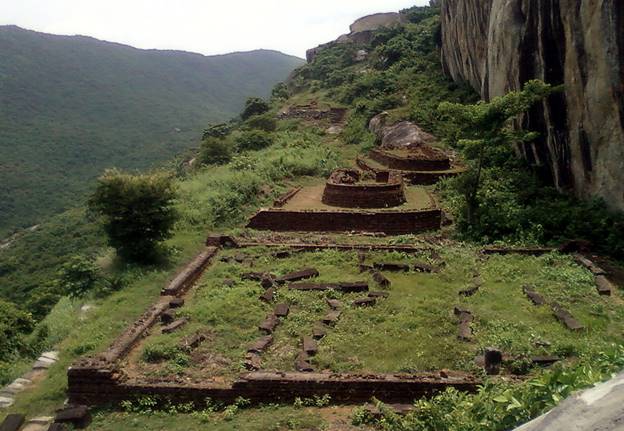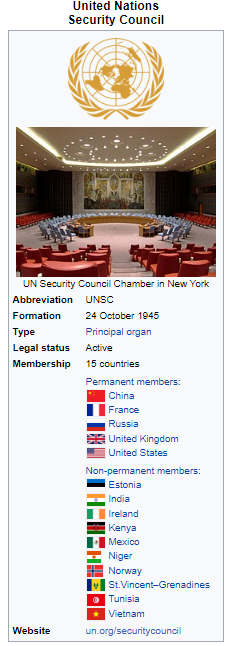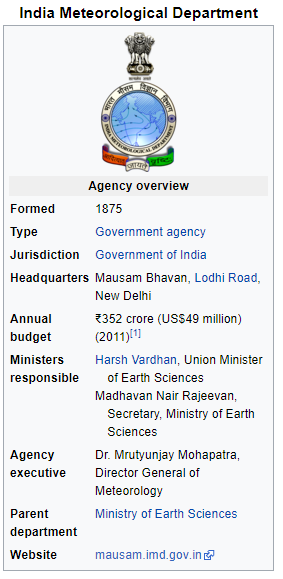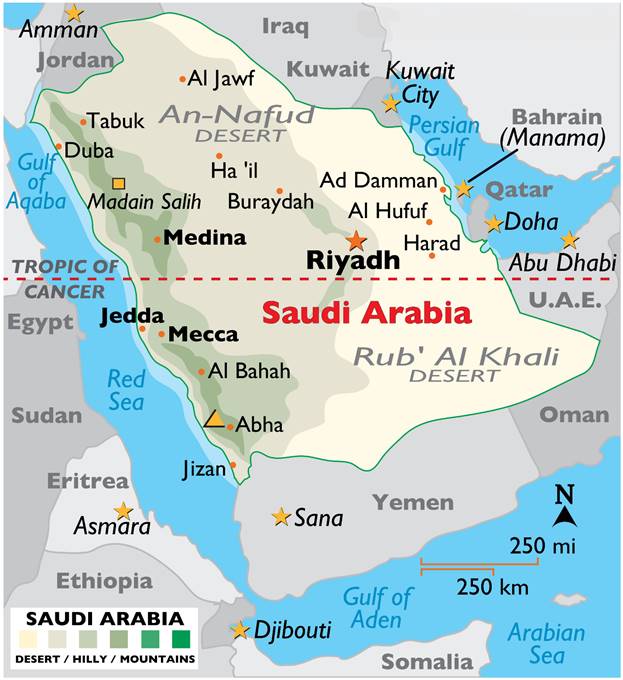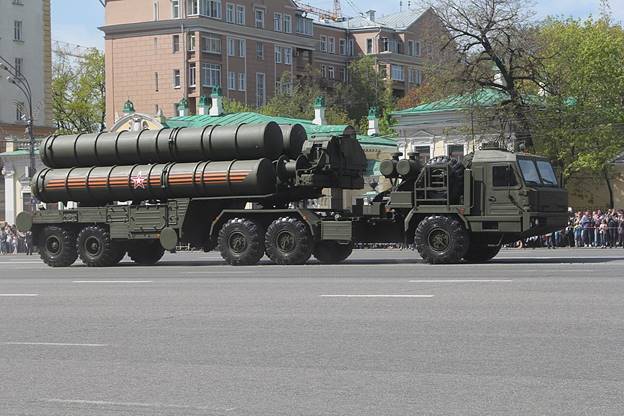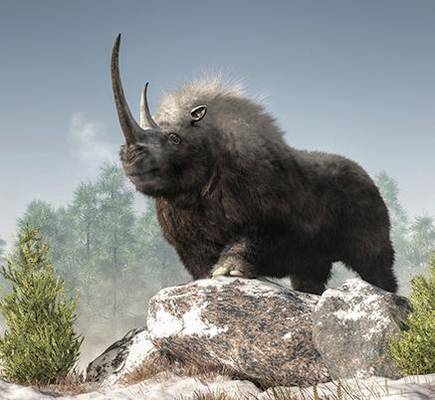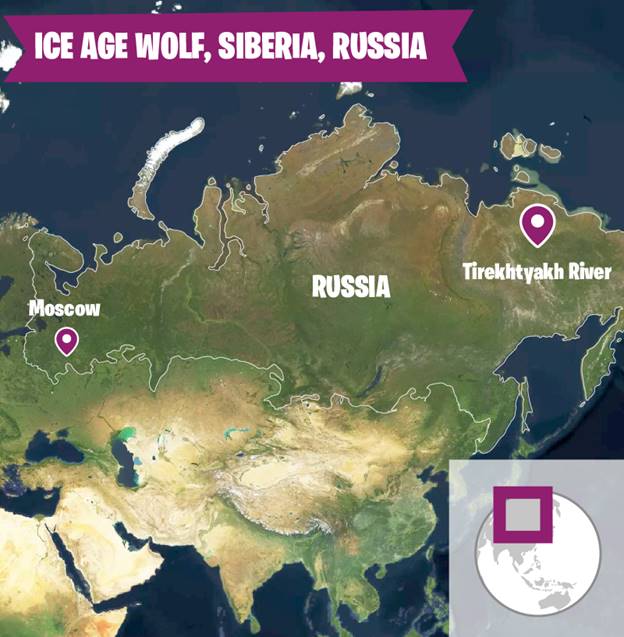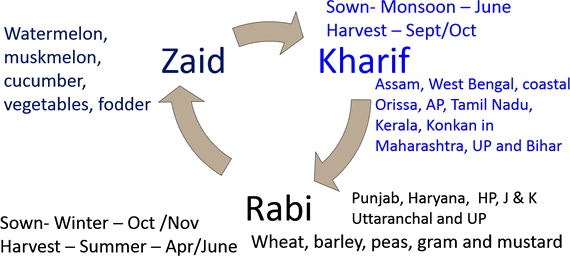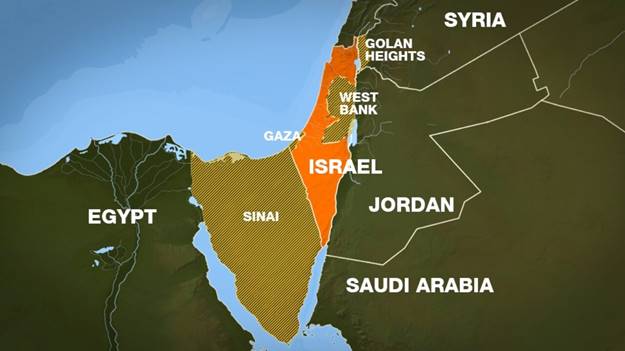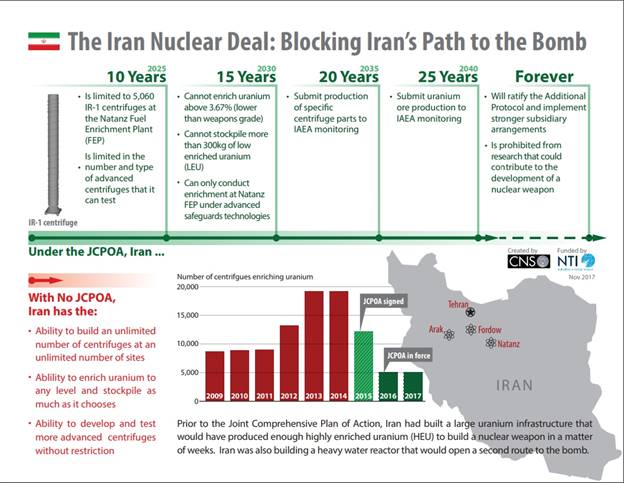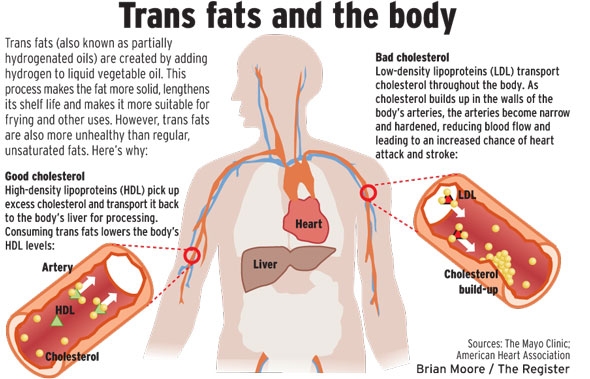The Jan 5th Current Affairs Quiz 2021
Quiz-summary
0 of 10 questions completed
Questions:
- 1
- 2
- 3
- 4
- 5
- 6
- 7
- 8
- 9
- 10
Information
The Jan 5th Current Affairs Quiz 2021
You have already completed the quiz before. Hence you can not start it again.
Quiz is loading...
You must sign in or sign up to start the quiz.
You have to finish following quiz, to start this quiz:
Results
0 of 10 questions answered correctly
Your time:
Time has elapsed
You have reached 0 of 0 points, (0)
Categories
- Not categorized 0%
- 1
- 2
- 3
- 4
- 5
- 6
- 7
- 8
- 9
- 10
- Answered
- Review
- Question 1 of 10
1. Question
Which of the following statements regarding “Ramateertham” recently seen in news are correct?
1. It is a famous Pilgrimage and also Ancient Historical Site since 3rd Century BCE which is present in Telangana
2. Ramateertham is one of the places made sacred by a traditional connection with Lord Sree Rama.
3. The Jains have also had a residence here, their remains consisting chiefly of natural caves with slab sculptures set in them, and some small ruined brick temples.CorrectAns; – b) Only 2 and 3
Explanation; –
· The statement 1st is incorrect because it is present in Andhra Pradesh not Telangana.
· Recently the idol of Lord Rama atop the historic Ramateertham temple, located 12 km from Vizianagaram, was vandalized.
About Ramateertham Temple
· Ramateertham is a village panchayat in Nellimarla mandal of Vizianagaram district in Andhra Pradesh in India. It is about 12 km from Vizianagaram city.
· It is a famous Pilgrimage and also Ancient Historical Site since 3rd Century BCE.
· Ramateertham is one of the places made sacred by a traditional connection with Lord Sree Rama.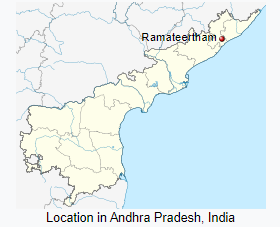
· The temple and village at the base of a chain of hills of solid rock on which are some perennial springs of water, and various places each in a way associated with the name of Rama.
· The Jains have also had a residence here, their remains consisting chiefly of natural caves with slab sculptures set in them, and some small ruined brick temples.
· It is one of the few places in this direction where Jains remains exist.
· The Black Granite hills on which you can find the ruins of some Buddhist and Jain structures known as Bodhikonda.
· Apart from it there are two other hills by name Gurabaktakonda (Gurubhakthulakonda) and Ghani konda (also known as Durga Konda) on which you can find a 3rd-century BC Buddhist Monastic complex remains and rock-cut caves with Jain Tirthankara images on the walls of the caves.
· A view of Ruined Jain temple on Bodhikonda below image
· Gurubhaktulakonda Buddhist Monastery remnants at Ramateertham in the below image
 Incorrect
IncorrectAns; – b) Only 2 and 3
Explanation; –
· The statement 1st is incorrect because it is present in Andhra Pradesh not Telangana.
· Recently the idol of Lord Rama atop the historic Ramateertham temple, located 12 km from Vizianagaram, was vandalized.
About Ramateertham Temple
· Ramateertham is a village panchayat in Nellimarla mandal of Vizianagaram district in Andhra Pradesh in India. It is about 12 km from Vizianagaram city.
· It is a famous Pilgrimage and also Ancient Historical Site since 3rd Century BCE.
· Ramateertham is one of the places made sacred by a traditional connection with Lord Sree Rama.
· The temple and village at the base of a chain of hills of solid rock on which are some perennial springs of water, and various places each in a way associated with the name of Rama.
· The Jains have also had a residence here, their remains consisting chiefly of natural caves with slab sculptures set in them, and some small ruined brick temples.
· It is one of the few places in this direction where Jains remains exist.
· The Black Granite hills on which you can find the ruins of some Buddhist and Jain structures known as Bodhikonda.
· Apart from it there are two other hills by name Gurabaktakonda (Gurubhakthulakonda) and Ghani konda (also known as Durga Konda) on which you can find a 3rd-century BC Buddhist Monastic complex remains and rock-cut caves with Jain Tirthankara images on the walls of the caves.
· A view of Ruined Jain temple on Bodhikonda below image
· Gurubhaktulakonda Buddhist Monastery remnants at Ramateertham in the below image

- Question 2 of 10
2. Question
Which of the following statements regarding UN Security council are correct?
1. The United Nations Security Council (UNSC) is one of the six principal organs of the United Nations (UN) charged with ensuring international peace and security
2. It also recommends the admission of new UN members to the General Assembly and approving any changes to the UN Charter.
3. The UNSC is the only UN body with the authority to issue binding resolutions on member states.
CorrectAns; – d) All of the above
Explanation; –
· All the statements are correct regaridng UNSC.
· Recently Five new countries join polarized U.N. Security Council
About UNSC
· The United Nations Security Council (UNSC) is one of the six principal organs of the United Nations (UN), charged with ensuring international peace and security, recommending the admission of new UN members to the General Assembly, and approving any changes to the UN Charter.
· Its powers include establishing peacekeeping operations, enacting international sanctions, and authorizing military action.
· The UNSC is the only UN body with the authority to issue binding resolutions on member states.
· Like the UN as a whole, the Security Council was created after World War II to address the failings of the League of Nations in maintaining world peace.
· It held its first session on 17 January 1946, and in the ensuing decades was largely paralyzed by the Cold War between the United States and the Soviet Union and their respective allies.
· While other organs of the United Nations make recommendations to member states, only the Security Council has the power to make decisions that member states are then obligated to implement under the Charter.
About Permanent and Non-Permanent Members
· The UNSC is composed of 15 Members: –
· Five permanent members: China, France, the Russian Federation, the United Kingdom, and the United States.
· Ten non-permanent members elected for two-year terms by the General Assembly.
About Selection of Non-permanent Members of Security Council
· Each year, the General Assembly elects five non-permanent members (out of ten in total) for a two-year term. The ten non-permanent seats are distributed on a regional basis:
· Each year, the General Assembly elects five non-permanent members (out of ten in total) for a two-year term. The ten non-permanent seats are distributed on a regional basis:
· Five for African and Asian countries.
· One for Eastern European countries.
· Two for Latin American and Caribbean countries.
· Two for Western European and other countries.
 Incorrect
IncorrectAns; – d) All of the above
Explanation; –
· All the statements are correct regaridng UNSC.
· Recently Five new countries join polarized U.N. Security Council
About UNSC
· The United Nations Security Council (UNSC) is one of the six principal organs of the United Nations (UN), charged with ensuring international peace and security, recommending the admission of new UN members to the General Assembly, and approving any changes to the UN Charter.
· Its powers include establishing peacekeeping operations, enacting international sanctions, and authorizing military action.
· The UNSC is the only UN body with the authority to issue binding resolutions on member states.
· Like the UN as a whole, the Security Council was created after World War II to address the failings of the League of Nations in maintaining world peace.
· It held its first session on 17 January 1946, and in the ensuing decades was largely paralyzed by the Cold War between the United States and the Soviet Union and their respective allies.
· While other organs of the United Nations make recommendations to member states, only the Security Council has the power to make decisions that member states are then obligated to implement under the Charter.
About Permanent and Non-Permanent Members
· The UNSC is composed of 15 Members: –
· Five permanent members: China, France, the Russian Federation, the United Kingdom, and the United States.
· Ten non-permanent members elected for two-year terms by the General Assembly.
About Selection of Non-permanent Members of Security Council
· Each year, the General Assembly elects five non-permanent members (out of ten in total) for a two-year term. The ten non-permanent seats are distributed on a regional basis:
· Each year, the General Assembly elects five non-permanent members (out of ten in total) for a two-year term. The ten non-permanent seats are distributed on a regional basis:
· Five for African and Asian countries.
· One for Eastern European countries.
· Two for Latin American and Caribbean countries.
· Two for Western European and other countries.

- Question 3 of 10
3. Question
Which of the following statements regaridng Indian Metrological Department (IMD) are correct?
1. The IMD is an agency of the ministry of Science and Technology
2. IMD is also one of the six Regional Specialized Meteorological Centres of the World Meteorological Organisation.
3. It has the responsibility for forecasting, naming and distribution of warnings for tropical cyclones in the Northern Indian Ocean region, including the Malacca Straits, the Bay of Bengal, the Arabian Sea and the Persian Gulf.CorrectAns; – b) Only 2 and 3
Explanation; –
· The 1st staement is incorrect because IMD is an agency of Minsitry of Earth Science.
· Recently 2020 was 8th warmest year since 1901 in India, says IMD; over 800 killed due to thunderstorms, lightning.
· The year that went by was the eighth hottest on record since 1901, the India Meteorological Department (IMD) said in its State of the Climate Report.
About IMD
· The India Meteorological Department (IMD) is an agency of the Ministry of Earth Sciences of the Government of India.
· It is the principal agency responsible for meteorological observations, weather forecasting and seismology.
· IMD is headquartered in Delhi and operates hundreds of observation stations across India and Antarctica. Regional offices are at Chennai, Mumbai, Kolkata, Nagpur, Guwahati and New Delhi.
· IMD is also one of the six Regional Specialized Meteorological Centres of the World Meteorological Organisation.
· It has the responsibility for forecasting, naming and distribution of warnings for tropical cyclones in the Northern Indian Ocean region, including the Malacca Straits, the Bay of Bengal, the Arabian Sea and the Persian Gulf.
 Incorrect
IncorrectAns; – b) Only 2 and 3
Explanation; –
· The 1st staement is incorrect because IMD is an agency of Minsitry of Earth Science.
· Recently 2020 was 8th warmest year since 1901 in India, says IMD; over 800 killed due to thunderstorms, lightning.
· The year that went by was the eighth hottest on record since 1901, the India Meteorological Department (IMD) said in its State of the Climate Report.
About IMD
· The India Meteorological Department (IMD) is an agency of the Ministry of Earth Sciences of the Government of India.
· It is the principal agency responsible for meteorological observations, weather forecasting and seismology.
· IMD is headquartered in Delhi and operates hundreds of observation stations across India and Antarctica. Regional offices are at Chennai, Mumbai, Kolkata, Nagpur, Guwahati and New Delhi.
· IMD is also one of the six Regional Specialized Meteorological Centres of the World Meteorological Organisation.
· It has the responsibility for forecasting, naming and distribution of warnings for tropical cyclones in the Northern Indian Ocean region, including the Malacca Straits, the Bay of Bengal, the Arabian Sea and the Persian Gulf.

- Question 4 of 10
4. Question
With which of the following countries the Saudi Arabia shares it land borders?
1. Qatar
2. Kuwait
3. UAE
4. OmanCorrectExplanation; –
· Saudi Arabia shares land borders with all the above-mentioned countries.
· Recently Saudi Arabia to lift Qatar embargo, easing the Gulf crisis.
· The lifting of the embargo by Saudi Arabia paves the way for Qatar’s ruler to attend an annual summit of Gulf leaders on Tuesday that will be held in the kingdom’s ancient desert site of Al-Ula.
About Saudi Arabia
· Saudi Arabia occupies most of the Arabian Peninsula, bounded by the Red Sea in the west and the Persian Gulf in the east.
· It is bordered by Jordan, Iraq, and Kuwait to the north by the Persian Gulf, Qatar, the United Arab Emirates, and Oman to the east, by a portion of Oman to the southeast by Yemen to the south and southwest and by the Red Sea and the Gulf of Aqaba to the west. Incorrect
IncorrectExplanation; –
· Saudi Arabia shares land borders with all the above-mentioned countries.
· Recently Saudi Arabia to lift Qatar embargo, easing the Gulf crisis.
· The lifting of the embargo by Saudi Arabia paves the way for Qatar’s ruler to attend an annual summit of Gulf leaders on Tuesday that will be held in the kingdom’s ancient desert site of Al-Ula.
About Saudi Arabia
· Saudi Arabia occupies most of the Arabian Peninsula, bounded by the Red Sea in the west and the Persian Gulf in the east.
· It is bordered by Jordan, Iraq, and Kuwait to the north by the Persian Gulf, Qatar, the United Arab Emirates, and Oman to the east, by a portion of Oman to the southeast by Yemen to the south and southwest and by the Red Sea and the Gulf of Aqaba to the west.
- Question 5 of 10
5. Question
Which of the following regarding S-400 missile are incorrect?
1. It is an anti-aircraft weapon system developed in the 1990s by Russia’s Almaz Central Design Bureau as an upgrade of the S-300 family.
2. As per Stockholm International Peace Research Institute (SIPRI) it is among the most advanced air defense systems available.
3. The S-400, also known by NATO countries as the SA-21 GrowlerCorrectAns; – d) None of the above
Explanation; –
· As question asked to choose incorrect statement but all the statements about S-400 are correct.
· Recently India’s S-400 deal with Russia may trigger US sanctions: Report
S-400 Missile
· The S-400 Triumf, previously known as the S-300PMU-3, is an anti-aircraft weapon system developed in the 1990s by Russia’s Almaz Central Design Bureau as an upgrade of the S-300 family.
· It has been in service with the Russian Armed Forces since 2007.
· It is a modern long-range SAM (MLR SAM), considered much ahead of the US developed Terminal High Altitude Area Defense system (THAAD).
· The S-400’s mission set and capabilities are roughly comparable to the famed US Patriot system.
· In 2017, the S-400 was described by The Economist as “one of the best air-defence systems currently made”, and Siemon Wezeman of Stockholm International Peace Research Institute (SIPRI) said it “is among the most advanced air defense systems available.”
· China was the first foreign buyer to make a government-to-government deal with Russia in 2014, while Saudi Arabia, Turkey, and Belarus have all acquired the system since. Incorrect
IncorrectAns; – d) None of the above
Explanation; –
· As question asked to choose incorrect statement but all the statements about S-400 are correct.
· Recently India’s S-400 deal with Russia may trigger US sanctions: Report
S-400 Missile
· The S-400 Triumf, previously known as the S-300PMU-3, is an anti-aircraft weapon system developed in the 1990s by Russia’s Almaz Central Design Bureau as an upgrade of the S-300 family.
· It has been in service with the Russian Armed Forces since 2007.
· It is a modern long-range SAM (MLR SAM), considered much ahead of the US developed Terminal High Altitude Area Defense system (THAAD).
· The S-400’s mission set and capabilities are roughly comparable to the famed US Patriot system.
· In 2017, the S-400 was described by The Economist as “one of the best air-defence systems currently made”, and Siemon Wezeman of Stockholm International Peace Research Institute (SIPRI) said it “is among the most advanced air defense systems available.”
· China was the first foreign buyer to make a government-to-government deal with Russia in 2014, while Saudi Arabia, Turkey, and Belarus have all acquired the system since.
- Question 6 of 10
6. Question
“Tirekhtyakh river” Sometimes seen in the news present in which of the folloiwng countries or continents?
CorrectAns; – b) Russia
Explanation; –
· Recently A well-preserved Ice Age woolly rhino with many of its internal organs still intact has been recovered from permafrost on the bank of the Tirekhtyakh river in Yakutia, Russia, near the Arctic Circle.
· Head of 32,000-year-old wolf found in Russian Arctic
· A well-preserved Ice Age woolly rhino with many of its internal organs still intact has been recovered from permafrost in Russia’s extreme north.
· The carcass was found on the bank of the Tirekhtyakh river in the Abyisk district, close to the area where another young woolly rhino was recovered in 2014.
· Researchers dated that specimen, which they called Sasha, at 34,000 years old.
· The Badyarikha is a river in Yakutia in Russia, a right tributary of the Indigirka.
· The length of the Badyarikha is 545 kilometres (339 mi) and the area of its drainage basin is 12,200 square kilometres (4,700 sq mi).
· Its sources are located on the northern slopes of the Moma Range.
· The Badyarikha flows on the eastern side of the Aby Lowland. Its main tributaries are the rivers Ogorokha, Orto-Tirekhtyakh, and Anty. Incorrect
IncorrectAns; – b) Russia
Explanation; –
· Recently A well-preserved Ice Age woolly rhino with many of its internal organs still intact has been recovered from permafrost on the bank of the Tirekhtyakh river in Yakutia, Russia, near the Arctic Circle.
· Head of 32,000-year-old wolf found in Russian Arctic
· A well-preserved Ice Age woolly rhino with many of its internal organs still intact has been recovered from permafrost in Russia’s extreme north.
· The carcass was found on the bank of the Tirekhtyakh river in the Abyisk district, close to the area where another young woolly rhino was recovered in 2014.
· Researchers dated that specimen, which they called Sasha, at 34,000 years old.
· The Badyarikha is a river in Yakutia in Russia, a right tributary of the Indigirka.
· The length of the Badyarikha is 545 kilometres (339 mi) and the area of its drainage basin is 12,200 square kilometres (4,700 sq mi).
· Its sources are located on the northern slopes of the Moma Range.
· The Badyarikha flows on the eastern side of the Aby Lowland. Its main tributaries are the rivers Ogorokha, Orto-Tirekhtyakh, and Anty.
- Question 7 of 10
7. Question
Which of the folloing are the Rabi Crops?
1. Wheat
2. Moong Dal
3. Mustard
4. WatermelonCorrectAns; – a) Only 1 and 3
Explanation; –
· The Moong Dal is Kharif Crop and Water Melon is Zaid Crop.
· Recently 2020-21 rabi food grains output may surpass previous record: Agriculture Minister Tomar
About Kharif Crops
· Crops that are sown during the southwest monsoon season are called kharif or monsoon crops.
· These crops are sown at the beginning of the season around end May to early June and are harvested post the monsoon rains beginning October.
· Rice, maize, pulses such as urad, moong dal and millets are among the key kharif crops.
About Rabi Crops
· Those that are sown during winter, are called rabi or winter crops.
· It begins by October.
· These crops are sown at the onset of winter which coincides with the northeast monsoon.
· The harvest for these crops happens typically during April and May, during the summer season.
· Wheat which is the staple grain for people in the Northern parts of the country is among the key rabi crops.
· Vegetables such as potato, tomato and onion are also cultivated post the winter onset and are harvested in summer.
· Some of the examples of Rabi crops except mustard are barley, gram, rapeseeds, oat and wheat.
About Zaid Crop
· This crop is grown in some parts of country during March to June.
· Prominent examples are Muskmelon, Watermelon, Vegetables of cucurbitacae family such as bitter gourd, pumpkin, ridged gourd etc. Incorrect
IncorrectAns; – a) Only 1 and 3
Explanation; –
· The Moong Dal is Kharif Crop and Water Melon is Zaid Crop.
· Recently 2020-21 rabi food grains output may surpass previous record: Agriculture Minister Tomar
About Kharif Crops
· Crops that are sown during the southwest monsoon season are called kharif or monsoon crops.
· These crops are sown at the beginning of the season around end May to early June and are harvested post the monsoon rains beginning October.
· Rice, maize, pulses such as urad, moong dal and millets are among the key kharif crops.
About Rabi Crops
· Those that are sown during winter, are called rabi or winter crops.
· It begins by October.
· These crops are sown at the onset of winter which coincides with the northeast monsoon.
· The harvest for these crops happens typically during April and May, during the summer season.
· Wheat which is the staple grain for people in the Northern parts of the country is among the key rabi crops.
· Vegetables such as potato, tomato and onion are also cultivated post the winter onset and are harvested in summer.
· Some of the examples of Rabi crops except mustard are barley, gram, rapeseeds, oat and wheat.
About Zaid Crop
· This crop is grown in some parts of country during March to June.
· Prominent examples are Muskmelon, Watermelon, Vegetables of cucurbitacae family such as bitter gourd, pumpkin, ridged gourd etc.
- Question 8 of 10
8. Question
Which of the following countries share border with West Bank?
1. Israel
2. Jordan
3. Syria
CorrectAns; – a) Only 1 and 2
Explanation; –
· Syria doesn’t border with west bank.
· Recently Israeli gunshot paralyzed Palestinian
About West Bank
· West Bank is a landlocked territory near the Mediterranean coast of Western Asia, bordered by Jordan to the east and by Israel on the south, west and north.
· The West Bank also contains a significant section of the western Dead Sea shore.
· Presently, most of the West Bank is administered by Israel though 42% of it is under varying degrees of autonomous rule by the Fatah-run Palestinian Authority. The Gaza Strip is currently under the control of Hamas.
 Incorrect
IncorrectAns; – a) Only 1 and 2
Explanation; –
· Syria doesn’t border with west bank.
· Recently Israeli gunshot paralyzed Palestinian
About West Bank
· West Bank is a landlocked territory near the Mediterranean coast of Western Asia, bordered by Jordan to the east and by Israel on the south, west and north.
· The West Bank also contains a significant section of the western Dead Sea shore.
· Presently, most of the West Bank is administered by Israel though 42% of it is under varying degrees of autonomous rule by the Fatah-run Palestinian Authority. The Gaza Strip is currently under the control of Hamas.

- Question 9 of 10
9. Question
Recently Vienna Accord is in news it is related to which of the following?
CorrectAns; – b) Iran Nuclear Deal Related
Explanation; –
· Recently Iran tells IAEA it plans to enrich uranium up to 20% at Fordow site
· The Joint Comprehensive Plan of Action (JCPOA) known commonly as the Iran deal or Iran nuclear deal, is an international agreement on the nuclear program of Iran reached in Vienna on 14 July 2015 between Iran, the P5+1 (the five permanent members of the United Nations Security Council China, France, Russia, United Kingdom, United States—plus Germany), and the European Union.
· It is also called the 2015 Vienna accord. Incorrect
IncorrectAns; – b) Iran Nuclear Deal Related
Explanation; –
· Recently Iran tells IAEA it plans to enrich uranium up to 20% at Fordow site
· The Joint Comprehensive Plan of Action (JCPOA) known commonly as the Iran deal or Iran nuclear deal, is an international agreement on the nuclear program of Iran reached in Vienna on 14 July 2015 between Iran, the P5+1 (the five permanent members of the United Nations Security Council China, France, Russia, United Kingdom, United States—plus Germany), and the European Union.
· It is also called the 2015 Vienna accord.
- Question 10 of 10
10. Question
Which of the following related to Trans Fatty Acids (TFA) are correct?
1. Trans fats, or trans-fatty acids, are a form of saturated fat.
2. TFA are found both naturally and artificially in foods.
3. TFA are created when the hydrogen is added to liquid vegetable oils.CorrectAns; – b) Only 2 and 3
Explanation; –
· Trans fats, or trans-fatty acids, are a form of unsaturated fat, not saturated fat.
· Recently FSSAI slashes limit for trans fat levels in foods
About Trans Fatty Acids (TFA)
· An unhealthy substance that is made through the chemical process of hydrogenation of oils. Hydrogenation solidifies liquid oils and increases the shelf life and the flavor stability of oils and foods that contain them.
· Trans fats are unsaturated fats with trans double bonds instead of cis bonds. The type of bond affects the shape of the fatty acid chain.
· Health experts have noted that TFA can be found both naturally and artificially in foods.
· While natural TFAs present in small amounts in beef, lamb, and full-fat dairy products are not considered harmful, but industrially-produced artificial trans-fats, which are manufactured by done through adding hydrogen to vegetable oil, lead to an increase in bad cholesterol (LDL) and lowering of good cholesterol (HDL).
· Hydrogenation is a process typically used by the industry to improve the flavour stability and keeping qualities of oil.
· Partial hydrogenation reduces the amount of saturated fats in oil, which are deemed unhealthy.
 Incorrect
IncorrectAns; – b) Only 2 and 3
Explanation; –
· Trans fats, or trans-fatty acids, are a form of unsaturated fat, not saturated fat.
· Recently FSSAI slashes limit for trans fat levels in foods
About Trans Fatty Acids (TFA)
· An unhealthy substance that is made through the chemical process of hydrogenation of oils. Hydrogenation solidifies liquid oils and increases the shelf life and the flavor stability of oils and foods that contain them.
· Trans fats are unsaturated fats with trans double bonds instead of cis bonds. The type of bond affects the shape of the fatty acid chain.
· Health experts have noted that TFA can be found both naturally and artificially in foods.
· While natural TFAs present in small amounts in beef, lamb, and full-fat dairy products are not considered harmful, but industrially-produced artificial trans-fats, which are manufactured by done through adding hydrogen to vegetable oil, lead to an increase in bad cholesterol (LDL) and lowering of good cholesterol (HDL).
· Hydrogenation is a process typically used by the industry to improve the flavour stability and keeping qualities of oil.
· Partial hydrogenation reduces the amount of saturated fats in oil, which are deemed unhealthy.


